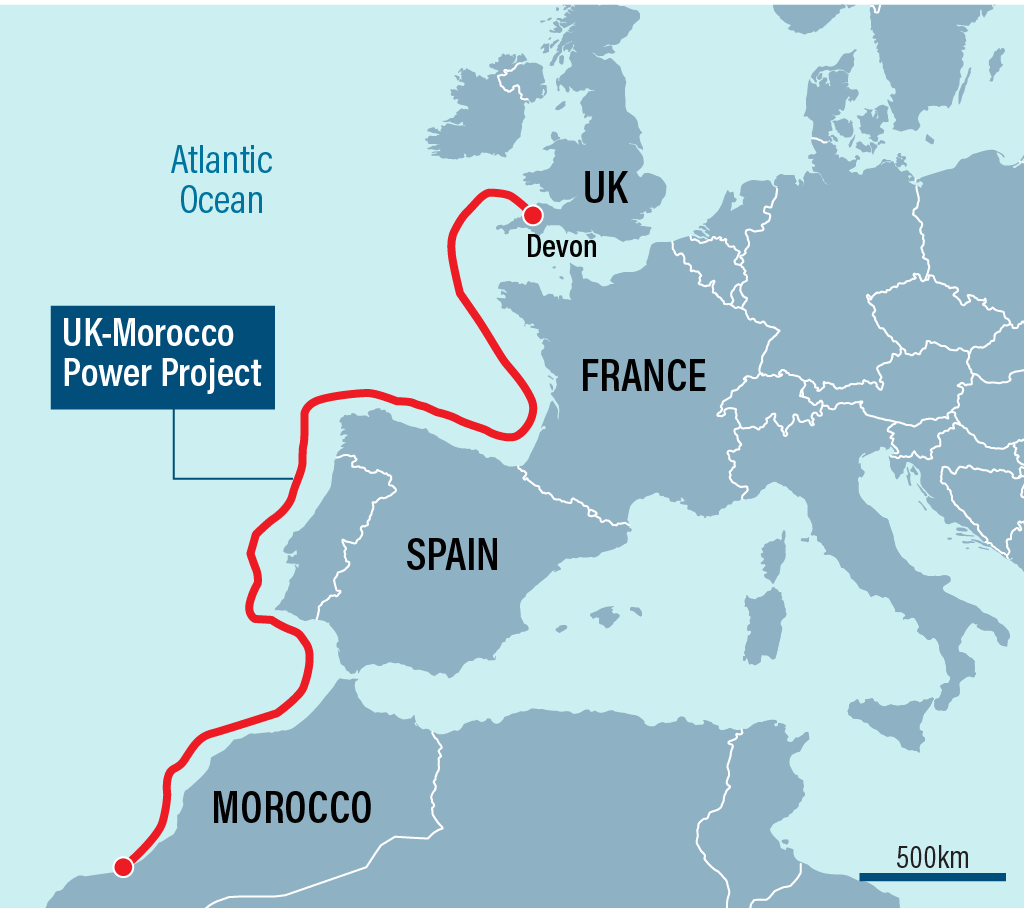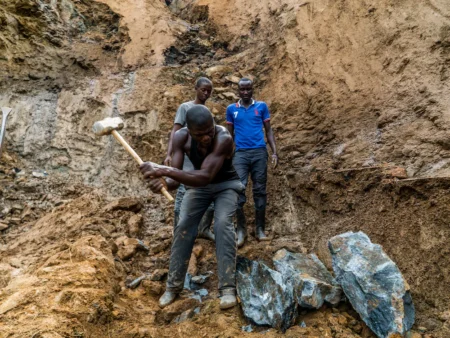- Xlinks will build a 3,800-kilometer subsea cable to supply solar and wind power.
- Morocco will construct a 20GWh/5GW battery storage on-site to store and deliver reliable energy to the UK when required.
- The undersea cable will be buried at depths between 100m and 250m for most of the route.
Africa’s energy sector has garnered increasing attention in recent times, driven by a global quest for alternative energy sources. Investors worldwide are turning their gaze toward the continent, drawn by its substantial energy reserves. Notably, the Morocco-UK power projects have made significant strides in recent developments.
One such project, led by Xlinks, a UK-based power plant, is diligently preparing the infrastructure required for an underwater renewable energy facility. This ambitious initiative not only bolsters Africa’s international connections but also heralds a transformative shift toward greener energy solutions across the continent.
Morocco-UK power project kickstarts
According to Joab Okanda, Africa contains at least 39 per cent of the world’s renewable energy potential. This sets the continent as the highest contributor to the green energy movement. Traditional energy sources have proven hazardous to the environment. Fortunately, with Africa’s slow industrialization, it has suffered the least from its adverse side effects.
Due to this, it perfectly places Africa to introduce alternative energy sources, causing a surge in activity within its energy industry. As a result, several organizations and governments have sought African partnerships and collaboration in the energy industry. The Morocco-UK energy project is among many initiatives several organizations and African governments have undertaken throughout the year.
In recent news, Britain has finally designated a plan to construct an undersea cable carrying renewable energy from Morocco. The Morocco-UK project is considered a “national significance”, and both parties have spared no expense in its design.
According to its paperwork, Xlinks, a UK power plant, will lead the project construction. Xlinks intends to build a 3,800-kilometer subsea cable to supply solar and wind power. According to the document, the supply will run from the Sahara to seven million British homes by 2030.
Aside from pioneering the Morocco-UK power project, the world’s longest high-voltage subsea cable, Xlinks intends to gain additional money, long-term price contracts, and authority to pass across the Spanish and French seas. Dave Lewis, CEO of the UK power plant, anticipated the total construction cost between $24.47 billion to $26.85 billion. In addition, the power plant also aligns with Morocco’s energy export strategy since the Morocco-UK Power project will generate over 10,000 jobs, with 2,000 being permanent jobs.
According to Britain’s documents, “London is interested in constructing submarine cables to supply clean, environmentally-friendly electricity from southern Morocco.” Furthermore, the project aligns with the global ambition to achieve carbon neutrality by 2050. It will also assist in expanding green economic activities according to the commitment agreed in COP21’s Paris Climate Accords.
Read Also: What to expect as much-awaited Africa Oil Week (AOW) kicks off in Dubai
Details of the Morocco-UK power project
The power generation facility for the undersea power cable will comprise a solar and wind farm. The farms will be at least 150000 hectares of land, located in the Guelmim Oued Noun Region of Morocco. Both facilities will generate at least 10.5GW of energy, of which 3.6GW will be transmitted directly to the UK, accounting for 8 per cent of its electricity demand.
In addition, Morocco’s government will construct a 20GWh/5GW battery storage on-site to store and deliver reliable energy to the UK when required. Both regions will construct new converter stations at both ends of the Morocco-UK HVDC interconnector. (bookbutchers.com) This will ensure sustainability and fast distribution of the energy. Morocco’s converter station will convert electricity generated from the farms from High voltage alternating current(HVAC) to HVDC.

The undersea cable will be buried at depths between 100m and 250m for most of the route. The Morocco-UK power project will stretch from the North-west of the city of Tantan, Morocco, up the Strait of Gibraltar, along the coasts of Portugal, Spain, and France, and finally reaching the isles of Scilly off the coast of Cornwall, UK.
The UK power plant has agreed with the National Grid for two 1.8GW connections at Alverdiscott in Devon, England. In addition, Xlinks has partnered with Cabkle manufacturing company XLCC to supply the cable required for the Morocco-UK power project. It will manufacture the undersea cable with aluminum conductors and insulations made of cross-linked polyethylene. XLCC completed the cable’s design in March 2022.
The Road to renewable energy
The Morocco-UK power project will provide the necessary drive for more industries to partner with Africa’s energy sector. One of the major reasons why Africa is a system to fully tap into its energy sources is the lack of equipment.
Through these collaborations, Africa will attain the necessary equipment to manufacture, store, and sell energy to other countries. Claire Coutinho, the UK’s new energy security minister, noted that the Morocco-UK project has the potential to eliminate the state’s use of fossil fuels.
She said, “The proposed project could play an important role in enabling an energy system that meets the UK’s commitment to reduce carbon emissions and the government’s objectives to create a secure, reliable, and affordable energy supply for consumers.“
Xlinks stated, “Enhancing energy security, in collaboration with a trusted friendly country, is a vital national interest to achieve Britain’s goals about clean, environmentally-friendly energy. This helps secure the transition to sufficient renewable sources of low-cost electricity through undersea cables, which will deliver 3.6GW of thermal electricity via a high-voltage direct current link.“











